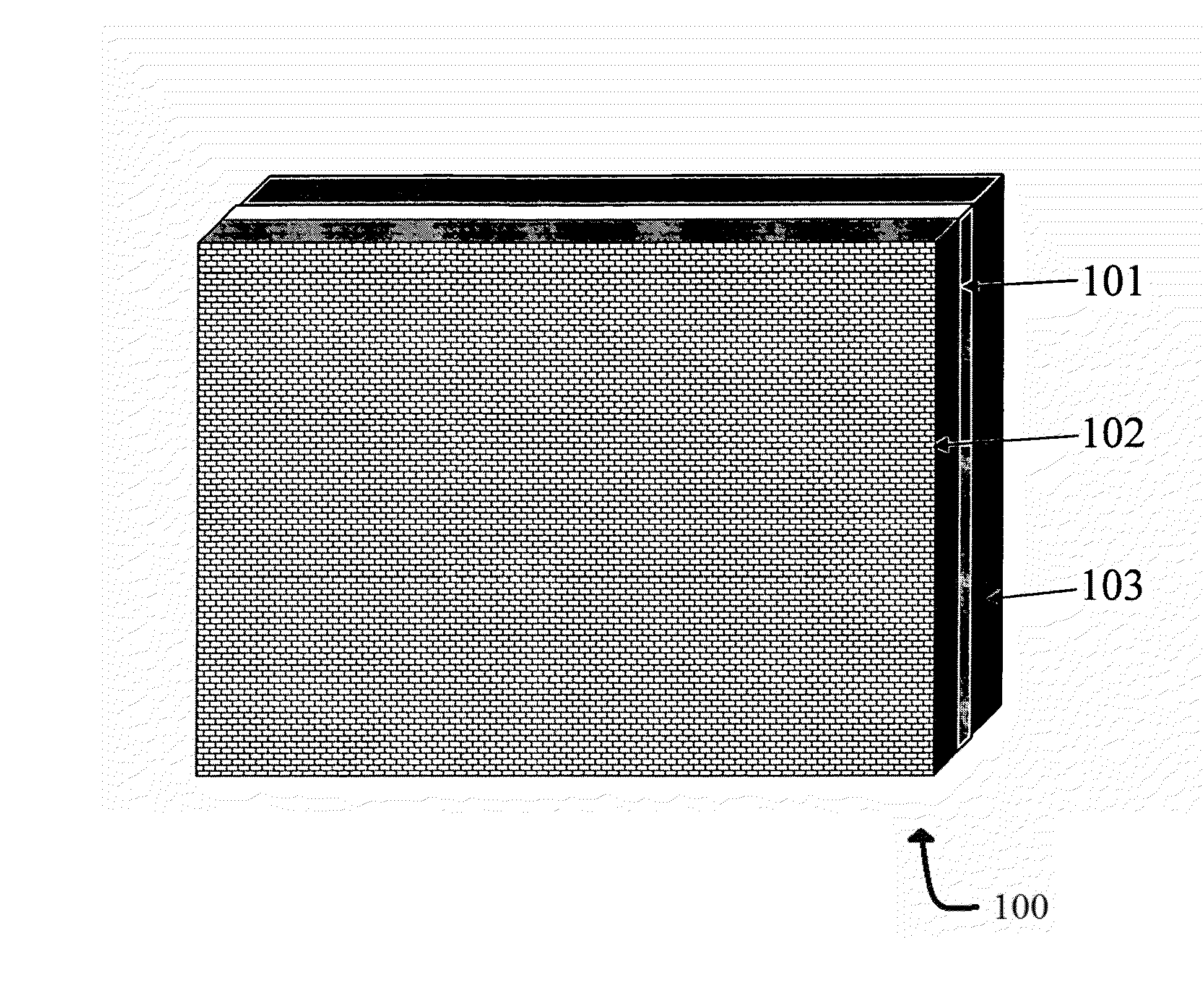Gunnable adhesive composition for use in construction membrane applications
a technology of construction membrane and composition, applied in the direction of adhesive process using foamed adhesive, application, film/foil adhesive, etc., can solve the problems of increasing the cost of surface treatment, and affecting the application process of weather barrier
- Summary
- Abstract
- Description
- Claims
- Application Information
AI Technical Summary
Benefits of technology
Problems solved by technology
Method used
Image
Examples
reference example 1
Peel Strength Testing
[0117]Peel testing was accomplished by adapting standard test method ASTM C794 “Adhesion in peel of elastomeric joint sealants” as follows. A testing plate was formed by fastening a sheet of the substrate to a stiff plate that will exhibit minimum bending or deflection upon conducting the test. A bead of gunnable adhesive composition was laid in dimensions of 0.25 inch (in) (0.635 cm) by 4 in (10.16 cm) onto the substrate on the plate. An aluminium screen measuring 0.5 in (1.27 cm) by 10 in (25.4 cm) was prepared in advance by washing in isopropanol (IPA), optionally priming with a primer described in the examples below, and allowing to dry at least 4 hrs at standard conditions of temperature and humidity. The prepared aluminium screen was applied to the bead and pushed into the bead such the entire area under the screen was filled with gunnable adhesive composition. To the top of the screen, a second bead of gunnable adhesive composition was applied similar to ...
reference example 2
Lap Shear Testing
[0119]Lap shear testing was accomplished by adapting standard test method ASTM C961 “Lap Shear Strength of Sealants” as follows. A specimen for testing was constructed by cutting strips of substrate measuring 1 inch by 4 inch (2.54 cm×10.16 cm). A mark was made at the end of one strip 1 in (2.54 cm) from the end so that there is a 1 in×1 in square (2.54 cm×25.4 cm square) available for bonding. A small amount of gunnable adhesive composition was applied in the 1 in square (2.54 cm square), enough to fill the void from an overlapping substrate when compressed. The second substrate was placed on the gunnable adhesive composition, inline, with tails 180° apart, so that there is a 1 inch square bonded together and 2 tails left apart in which to later pull. Two shims, each having a thickness of 60 mils (0.152 cm), were placed on either side of the specimen. A flat plat was held to the 2 shims and moved forward along the sample, pushing excess gunnable adhesive compositio...
reference example 3
[0121]Peel strength testing was performed according to a modified ASTM C794 180° Peel Adhesion test. In this test, each substrate was cleaned with isopropanol (IPA wipe) and allowed to dry. The compositions to be tested were applied to the substrates using a draw-down technique and appropriate shims (drawdown bar) to create 1 / 16 in (0.159 cm). thick line. Strips of (20 count) aluminium mesh 0.5 in (1.27 cm) wide screen were cleaned with xylene and primed with DOW CORNING® DC 1200 red primer available from Dow Corning Corporation of Midland, Mich., U.S.A. The cleaned screens were laid on top of each composition. A second layer of composition was applied to peel using appropriate shims (drawdown bar) to create another 1 / 16 in. (0.159 cm) thick line. The resulting specimens were then cured and evaluated. The first set of specimens were cured by being left at standard conditions (70° F. (21.1° C.) and 50% RH) for 7 days. Peak peel strength was measured on 3 specimens and an average valu...
PUM
| Property | Measurement | Unit |
|---|---|---|
| temperature | aaaaa | aaaaa |
| surface energy | aaaaa | aaaaa |
| surface energy | aaaaa | aaaaa |
Abstract
Description
Claims
Application Information
 Login to View More
Login to View More - R&D
- Intellectual Property
- Life Sciences
- Materials
- Tech Scout
- Unparalleled Data Quality
- Higher Quality Content
- 60% Fewer Hallucinations
Browse by: Latest US Patents, China's latest patents, Technical Efficacy Thesaurus, Application Domain, Technology Topic, Popular Technical Reports.
© 2025 PatSnap. All rights reserved.Legal|Privacy policy|Modern Slavery Act Transparency Statement|Sitemap|About US| Contact US: help@patsnap.com

